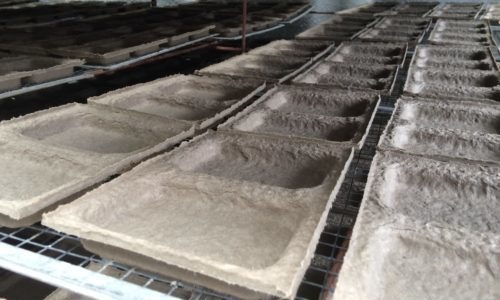Pulp tray forming machines are a crucial component in the production of a wide range of paper-based products, including egg trays, fruit trays, and other packaging solutions. To produce high-quality pulp trays, it is essential to have a thorough understanding of the various components that make up a pulp tray forming machine. In this comprehensive guide, we will explore the different components of a pulp tray forming machine and how they work together to produce high-quality pulp trays.
Introduction
Pulp tray forming machines are complex pieces of equipment that require a deep understanding of their various components to operate efficiently. In this guide, we will provide an overview of the different components of a pulp tray forming machine and how they work together to produce high-quality pulp trays. Whether you are new to the pulp tray forming industry or looking to improve your understanding of the equipment, this guide will provide valuable insights into the inner workings of a pulp tray forming machine.
Pulp Making System Components
The pulp making system is responsible for converting raw materials such as waste paper, cardboard, or agricultural waste into a pulp. The main components of the pulp making system include:
Pulper – A machine that shreds and hydrates the raw materials to create a pulp mixture.
Refiner – A machine that further refines the pulp mixture, improving its strength and reducing the size of any impurities.
Pulp Pump – A device that pumps the pulp mixture to the molding system.
Pulp Tank – A storage tank that holds the pulp mixture before it is sent to the molding system.
Molding System Components
The molding system is responsible for forming the pulp mixture into the desired shape, such as an egg tray or fruit tray. The main components of the molding system include:
Forming Machine – A machine that transfers the pulp mixture onto the molding dies.
Molding Dies – A metal plate with cavities that shape the pulp mixture into the desired shape.
Vacuum System – A system that creates a vacuum, which removes excess water from the pulp mixture, helping to form the desired shape.
High-Pressure Water System – A system that sprays high-pressure water onto the molding dies, helping to release the finished product from the dies.
Drying System Components
The drying system is responsible for drying the formed pulp trays to a moisture content that makes them suitable for use. The main components of the drying system include:
Drying Line – A series of drying chambers that dry the formed pulp trays.
Conveyor System – A system that transports the formed pulp trays through the drying line.
Burner – A device that provides heat to dry the pulp trays.
Air Blower – A device that circulates hot air through the drying line, helping to dry the pulp trays.
Stacking and Packaging System Components
The stacking and packaging system is responsible for collecting, stacking, and packaging the dried pulp trays. The main components of the stacking and packaging system include:
Stacker – A device that stacks the finished pulp trays onto pallets.
Counter – A device that counts the number of finished pulp trays produced.
Packaging Machine – A machine that packages the finished pulp trays into the desired packaging.
Maintenance and Upkeep of Pulp Tray Forming Machine Parts
To ensure the smooth operation of a pulp tray forming machine, it is crucial to perform regular maintenance and upkeep. Common maintenance issues include:
- Wear and Tear – Components such as the molding dies and conveyor belts are subject to wear and tear and will require replacement over time.
- Clogging Pulp molding machines can experience clogging issues, which can halt the production process. The clogs can occur at any stage of the process, from the slurry preparation stage to the forming and pressing stage. The most common cause of clogging is improper fiber preparation. The fiber must be properly broken down and mixed with water to create a slurry that is easy to process. If the fiber is not properly broken down or if the slurry is too thick, it can cause blockages in the machine.
- Forming and pressing components The forming and pressing components are the heart of the pulp molding machine. These components shape the slurry into the desired shape and size of the tray. The forming component is responsible for the initial shaping of the tray, while the pressing component applies pressure to the tray to remove any excess water and compact the fibers. The quality and efficiency of these components play a critical role in the overall performance of the machine.
- Electrical and control components The electrical and control components are responsible for the overall control and monitoring of the pulp molding machine. These components include the control panel, sensors, and various electrical components that manage the machine’s speed, temperature, and pressure. The control panel allows operators to adjust the settings of the machine and monitor its performance.
- Drying system components After the forming and pressing process, the molded trays contain a certain amount of moisture. To ensure the trays are completely dry and ready for use, they need to be passed through a drying system. The drying system components typically include a drying tunnel, hot air blowers, and temperature and humidity sensors. The trays pass through the drying tunnel, where they are exposed to hot air blowers that remove the excess moisture. The temperature and humidity sensors monitor the drying process to ensure the trays are dried to the desired level.
Understanding the various components of a pulp molding machine is essential for maintaining and optimizing the performance of the machine. Regular maintenance and replacement of worn-out components are crucial to ensure the machine continues to produce high-quality trays efficiently. By investing in a high-quality pulp molding machine with quality components, businesses can increase their production capacity and improve their bottom line.
